Monarch butterflies arrived in the Finger Lakes in mid June to sip thistle and milkweed nectar, mate, and lay eggs on the underside of milkweed leaves. As I searched for tiny eggs (the little white dot on the leaf on the left), I sometimes found larger caterpillars.
Nearly invisible tiny caterpillars chewed their way out of the egg case and began eating. The caterpillars devoured milkweed leaves I provided fresh each day from plants in my fields. Only 1% survive in the wild because of predators (mostly insects) and disease, but over 90% survive when protected. In two weeks, they molted or shed their skin five times as they increased size by 2000%. That would be like a human newborn becoming the size of an elephant in 14 days.
Each mature caterpillar found a place to hang in a J hook and shed its outer skin to reveal a green chrysalis with gold flecks. Then all was quiet for a two weeks until that thrilling moment when butterfly wings became visible through the chrysalis skin.
The chrysalis blackened before it split and the butterfly emerged. It hung upside down a few hours as the body straightened and the wings filled with blood.
I kept newly emerged butterflies protected for a day so they were strong when released. They don’t eat the first 24 hours, but then the search for nectar began. Zinnias in the flower garden were a draw, but wildflowers in the fields were better.
An early October migrating Monarch sipped New England Aster to stock up before taking off for a long flight. This one butterfly would fly over 2000 miles to its wintering ground in the mountains of Mexico before pausing there for three to four months, flying north, and laying eggs in Texas. The cycle continues as the progeny of each butterfly mates and heads north until the great grandchildren of the ones I released in the fall make their way back to this land in June. So, the cycle begins again.
What joy to midwife 100 Monarchs in 2018 and play a small role in one of Nature’s Miracles. I look forward to their return in June 2019.
***
Because I’ll have cochlear implant surgery in February, I can’t visit the Monarch Biopreserve in Michoacan, Mexico to see the wintering Monarchs, but that’s my hope for next winter. What long-term dream do you want to fulfill–not necessarily a self-reform discipline for the new year, but something you’ve always wanted to do? Will it happen in 2019? For other posts about Monarch butterflies, see Mothering Monarchs, Mothering My Soul or Precious Transformation: Monarch Butterflies, Mystery, and Mythology.
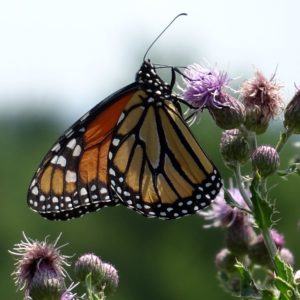
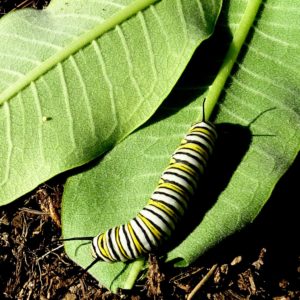
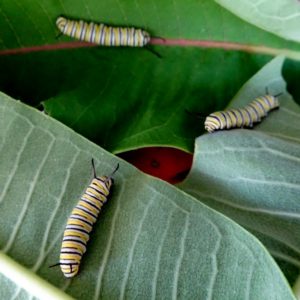

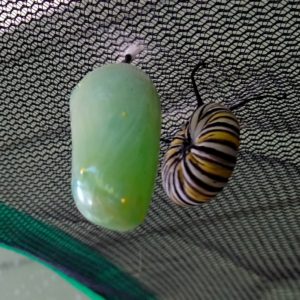

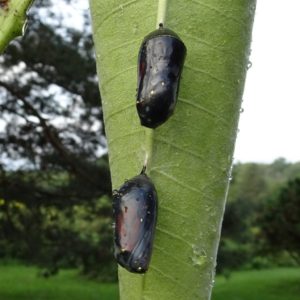

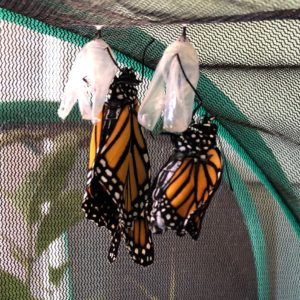
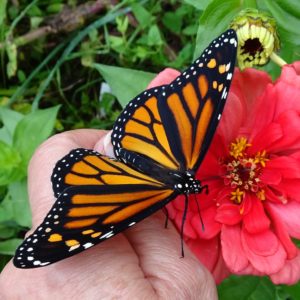
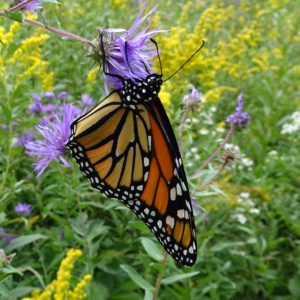
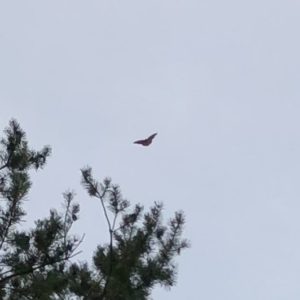

What beautiful pictures. Thank you for sharing them with us.
Thank you, Lydia. The Monarchs had a good year according to migration census in Mexico, but they need many good years to get close to the numbers we once enjoyed. Blessed New Year to you–and all of life.
What a gift! This was a magical thing to share – and read – today!
Thank you, Karey. I had fun going through photos and picking ones to use. Can’t wait to see a Monarch in June.
Dear Elaine, Thank you so much for sharing your beautiful, transformational butterfly story with us, from birth to migration. I have loved following their journey with you through your wonderful words and images. Next year I hope to write a poem for each month of the year. I dreamt of doing so and feel certain that I must now follow this dream! So I will pull on my boots each month and venture outside and try to write a poem in the first week or so to gain that deeply authenticity feel and not to write ahead of myself. Wish me luck! Christmas blessings, love and light, Deborah.
I always wish you luck, love, and light. That’s a wonderful idea, Deborah. I know you’ll create a beautiful cycle of twelve–and it will all be a surprise. I’ll wait patiently each month. It’s cold and snowy here, but even colder is needed to get a deep freeze of the top muddy layers of soil and enjoy the woods. Because of excess rain, there’s mud under the snow, so lots of slipping and sliding on my forest walks when I come to a wet spot. I often go uphill with Willow to a hard-packed road in the National Forest. It’s wild and beautiful and rarely used in winter. Maybe this spring I’ll write about the gifts of sound. Sending love across the ocean.
Hi Elaine, Beautiful photographs .It is such an honour to play our small part in nature . I now know about Monarchs and Milkweed ( we have Red Admirals and Peacocks, though in ever reducing numbers). Hope you have a fulfilling 2019 and it all goes well in February . Here is an Advent poem to share with you.
Advent ( 19th December 2018)
Only when the sun has set
and darkness descends
can we see
the starry heavens
only in the night
can we follow the star
that leads
to the new birth
only when we move
from
the highways and
well travelled roads
and tread
the uncharted ways
on our journey
to unknowing
only when we dwell
among the creatures
of the fields
with the wise ones,
when we join
with the rhythms
of becoming
and dissolving
only when we succumb
to the spirit
that reaches out,
and hold open our hand
to a new beginning
Only then
can we give birth
to the Holy Child
only then
can the Holy Child
give birth to us.
Best Wishes
Gary
Thank you, Gary. Your poem is exquisite. I’m grateful for your gift. May I hold open my hand to the new beginning.
I have some Red Admirals and Painted Ladies here and usually many Swallowtails, but saw fewer of all of these in 2018 even though it was a good year for Monarchs. I looked up a Peacock Butterfly since I’ve never seen one and realize they’re only in Europe and Asia. They are beautiful. I also learned on my little Peacock search that there’s a small population of Monarchs in Spain. As I get close to the end of the fascinating (to me) and scholarly book ‘Monarchs and Milkweed,’ I’m learning that no one knows about their ritual significance for pre-Hispanic indigenous Mexican people in the small Monarch wintering area–although everyone assumes their arrival and departure must have been an important sacred event. It’s now associated with the Day of the Dead in early November, but that holiday came with the Spaniards. Since summer, I’ve asked many scholars and done many library searches (with help of librarians), but no one knows and no detailed information is discovered. If this knowledge is lost, then I may have to create a personal myth about them. I hope I make it to the Biopreserve in the mountains of Mexico next year.
Hi Elaine,
I wonder whether there are some things which are so awe inspiring that there is nothing more to be said . However if you do come up with a personal myth about them, hopefully you will share it . If I had ever seen one or had an internalised sense of them I would probably write them into a poem. Does that sound like a challenge to you ?
Best Wishes
Gary
I agree. Often with unusual manifestations in nature, the local religion makes note of it as a sacred happening. Perhaps not in this case. It was only discovered where the Monarchs wintered in 1976 after years of searching, although there’s the assumption that local people knew about it. Hard to know because the butterflies winter in remote spots high in the mountains. I may never know and that’s OK. They’re sacred to me. The butterfly is a goddess symbol in Greek Mythology (as you may well know), and Psyche is the name for butterfly and also Soul. So, I’m curious. I rarely write poetry, but occasionally. I’ll see what happens as I begin writing about Monarchs again this summer. Until then, I’m having a great time learning about the science of their life cycle, migrations, and the evolutionary relationship with milkweed. Yes, that’s magic enough.
I have a newly developing interest in Monarch Butterflies, and will at some time invest in the book you mentioned . In the meantime I have gone for the illustrated book for 5 year olds for 1 penny plus pp . I love the idea that it was only 1976 that their overwintering site was discovered. If I knew the location of something so precious I’m sure I would keep quiet about it or just tell a special few. If you want to imagine a “Monarch Poem” get a copy of Pablo Neruda’s poem “Poetry” and substitute the image of the Monarch Butterfly instead of “poetry” Imagine it flying through the poem . This is a great poem for substitution of themes . Happy Flying.
Thank you, Gary. I love the Neruda poems I’ve read (not a lot) especially when my friend from the Dominican Republic reads a poem from him first in English and then in Spanish. The Spanish is like a song–and I don’t understand the language. I get the melodic rhythms. I just found the poem you suggested and followed your directions for substituting “Monarch” for “Poetry.” It works! I need to read again a few times. ‘Monarchs and Milkweed’ might be available through a library. So you have an inter-library loan system? It’s well-written and a little academic in the details, but fascinating. It’s focused on the habits of Monarchs in this area because the author fell in love with Monarchs when he came to teach here.
You are a precious Mother Nature and Nurturer to these monarchs, winged angels. And they are miracles too as you point out: “This one butterfly would fly over 2000 miles to its wintering ground in the mountains of Mexico before pausing there for three to four months, flying north, and laying eggs in Texas” and then continue north.
No matter how grim the world news, I could expect some miraculous showings on your Facebook page. Thank you for that, Elaine!
My long-term dream for 2019? The publication of my memoir, which seems possible at long last. I pray for better hearing for you in 2019 after successful cochlear implant surgery. Yes, indeed! 🙂
The Monarchs give me so much joy, Marian. I look forward to finding eggs in June and beginning again. I learned when Vic was dying and then after his death that if I could find just one beautiful or kind thing, I could make it through the next few minutes or next hour or day. It worked for me in chemotherapy rooms and in hospitals. It worked for me in deepest grief. It works for me still. Poetry helps when nature isn’t available.
Many are eagerly awaiting your book. I know it will be a gem. I also know how hard it is to pull all the pieces together and get to the place where it feels truly done. We have to be driven by inspiration to move through the process. I thought I would write about raising Monarchs mixed with their pre-Hispanic mythology in Mexico, but no one has found that pre-Hispanic mythology although I’ve pestered many librarians and scholars. I may have to steer that ship in a different direction or let it sink. I’m also working on mythology, aging, and grief for a workshop I’ll do in May. I hope to have the workshop material ready (it’s close now) before the sound receiver is activated in mid March so I can focus on re-learning to hear. If I’m not adjusted to the new sound, I’ll still have the hearing I function with now. Trust needed that this will all work out. Also trust that if I have a book that needs to happen, life will let me know and provide the shove as it did with my first book. Until then, I write every day. May these holy days be filled with peace and love.
🙂
Thank you for sharing this beautiful emergence into new life Elaine. Truly magnificent that you got those closeups! 🙂 Happy holidays!
They aren’t worried about humans, Debby, especially the ones I raise. And my camera has a zoom lens when we’re in the field. Blessed New Year’s to you. May all go well with your writing and your husband’s health.
Thank you Elaine. We are in beautiful Puerto Vallarta til beginning of March. I have seen a few of these beautiful monarchs already! 🙂 Best to you.
That sounds like a good idea as it snows here. I’m grateful for my busy bird feeders. I’m about to pull on my boots and test the weather out there. Stay warm. I haven’t been to your site for a long time, so I’m sure I’ll find reports on your experience there. I’m glad you’re seeing our Monarch friends.
Your stories of the Monarchs are always so inspiring Elaine. I think of he tiniest seed in origin, incubating, growing, and splitting the filmy veil as the butterfly emerges – and that they travel 2000 miles to Mexico and Texas is beyond amazing!
Your photographs are lovely. Thank you for keeping us up to date of your role of these Monarchs. Your comments provide additional interesting information – eg Psyche: Butterfly
May 2019 bring harvests os all kinds Elaine …
Blessed New Year to you, Susan. I can only imagine how warm it is there, but you must have a breeze off the sea. The Greek connection to butterflies (I wrote about Eros and Psyche once, but want to write more) is clear and strong. The Minoan Bee Goddess is also easy to research and there are many images. That’s not true with Monarchs in Mexico. What was once thought to be a butterfly temple in Mexico City is now identified as an owl goddess temple. I hoped to find strong connections with pre-Hispanic cultures in that specific area of Mexico where they winter, but it remains a mystery to the most serious academic researchers. So, I’ll imagine Monarch Butterfly Goddesses. My daughter-in-law and I made plaster masks of our faces but I didn’t have a thick paint (gesso) needed to prime the outer surface before using acrylic paint. I’ll get that soon and begin creating a Monarch mask. I can use my photos as models.
Your post is filled with so much magic and beauty. I love to think of the journey that you are sharing with the Monarchs. Something quite lovely came into my life which I was able to say “yes” to because of the question you posed at the end of your post (related to a creative project I can do with chronic illness). Thank you, Elaine.
I just looked at the date and realized your cochlear implant is a month from today–more miracles await.
Monarchs demand little physically–careful searching through the milkweed for eggs and small caterpillars, harvesting fresh milkweed which grows everywhere here, and cleaning their tidy frass out of jars and crates–but they give so much in return. My best joy hobby, but it only lasts 4 months out of the year. I look forward to the implant, Anne. Thanks for your enthusiasm. A miracle with hard work. Neither the Monarchs nor I have ears to hear. That’s natural for them. For me, it’s something that happened without known cause beginning 25 years ago. I’m talking to many people who have implants and have yet to talk to anyone who is unhappy with the results. The only impediment is living alone and not listening enough. I’ll have to change my reclusive habits and do more listening than reading. Life asks for something new and it comes with hope. I plan to give it all I’ve got.